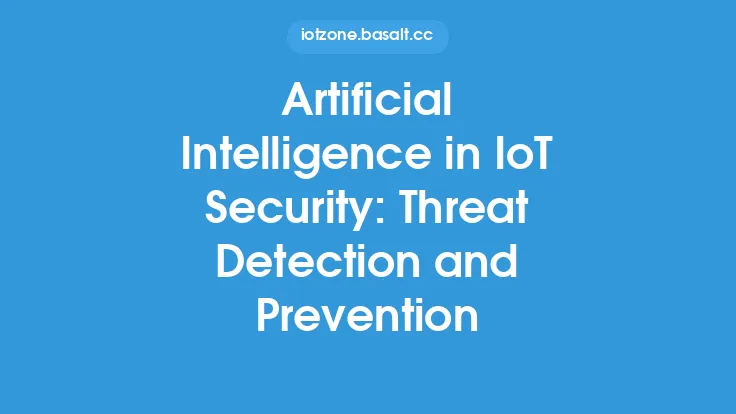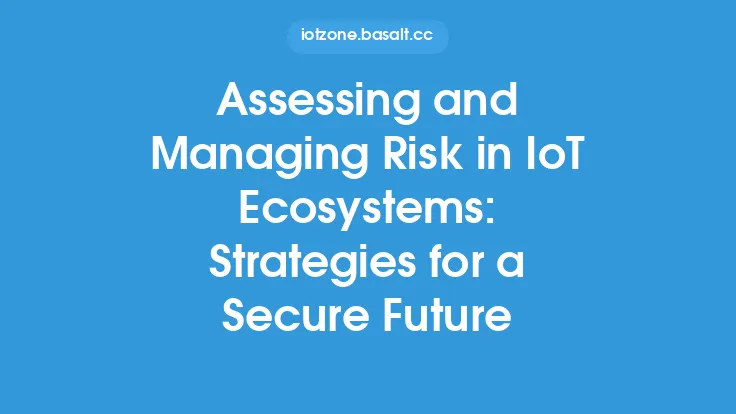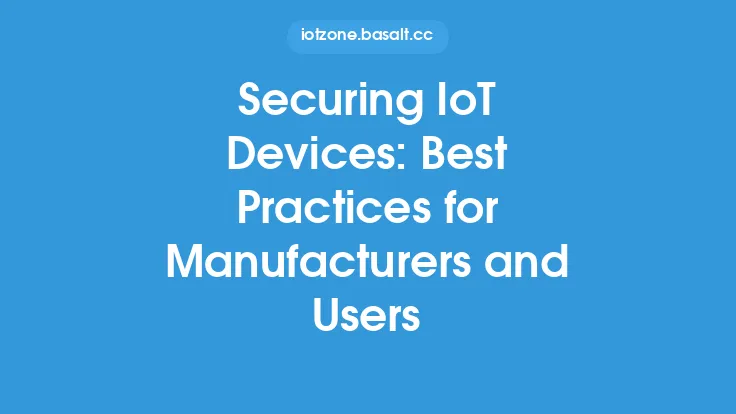The increasing number of devices connected to the internet has led to a significant rise in the potential attack surface for malicious actors. Internet of Things (IoT) networks, in particular, are vulnerable to various types of attacks due to the sheer number of devices and the complexity of their interactions. To mitigate these risks, Intrusion Detection and Prevention Systems (IDPS) have become essential components of IoT network security. In this article, we will delve into the world of IDPS for IoT networks, exploring their functionality, types, and implementation.
Introduction to IDPS
IDPS are network security systems that monitor and analyze network traffic to identify and prevent potential security threats. They are designed to detect and respond to intrusions, anomalies, and other malicious activities in real-time. IDPS can be categorized into two main types: Intrusion Detection Systems (IDS) and Intrusion Prevention Systems (IPS). IDS are designed to detect and alert on potential security threats, while IPS are designed to prevent these threats from occurring in the first place. In the context of IoT networks, IDPS play a critical role in identifying and mitigating potential security threats before they can cause harm.
Types of IDPS
There are several types of IDPS that can be used in IoT networks, including:
- Network-based IDPS: These systems monitor network traffic to identify potential security threats. They can be implemented as hardware or software solutions and are often used in conjunction with other security measures such as firewalls and access controls.
- Host-based IDPS: These systems monitor individual devices or hosts to identify potential security threats. They are often used in conjunction with network-based IDPS to provide an additional layer of security.
- Distributed IDPS: These systems consist of multiple sensors and collectors that work together to monitor and analyze network traffic. They are often used in large-scale IoT networks where a single point of monitoring is not sufficient.
- Hybrid IDPS: These systems combine multiple types of IDPS, such as network-based and host-based, to provide a comprehensive security solution.
IDPS Functionality
IDPS for IoT networks typically perform the following functions:
- Traffic monitoring: IDPS monitor network traffic to identify potential security threats. This includes analyzing packet headers, payloads, and other network traffic characteristics.
- Anomaly detection: IDPS use various techniques such as statistical analysis and machine learning to identify anomalies in network traffic that may indicate a potential security threat.
- Signature-based detection: IDPS use pre-defined signatures to identify known security threats such as malware and viruses.
- Alerting and notification: IDPS alert and notify security administrators of potential security threats, allowing them to take prompt action to mitigate the threat.
- Prevention: IDPS can prevent potential security threats by blocking or dropping malicious traffic, modifying firewall rules, or taking other preventative measures.
IDPS Implementation
Implementing IDPS in IoT networks requires careful planning and consideration of several factors, including:
- Network architecture: IDPS should be implemented in a way that takes into account the network architecture and topology. This includes considering the placement of IDPS sensors and collectors, as well as the flow of network traffic.
- Device capabilities: IDPS should be implemented on devices that have the necessary capabilities and resources to support IDPS functionality. This includes considering factors such as processing power, memory, and network bandwidth.
- Security policies: IDPS should be implemented in accordance with established security policies and procedures. This includes defining what constitutes a security threat, as well as the actions to be taken in response to a detected threat.
- Scalability: IDPS should be implemented in a way that allows for scalability and flexibility. This includes considering the potential for future growth and expansion of the IoT network.
Challenges and Limitations
While IDPS are essential components of IoT network security, there are several challenges and limitations to their implementation, including:
- False positives: IDPS can generate false positives, which can lead to unnecessary alerts and notifications.
- False negatives: IDPS can also generate false negatives, which can lead to undetected security threats.
- Performance impact: IDPS can impact network performance, particularly if they are not implemented correctly.
- Complexity: IDPS can be complex to implement and manage, particularly in large-scale IoT networks.
- Evasion techniques: Malicious actors can use evasion techniques to avoid detection by IDPS, such as encrypting traffic or using stealthy communication protocols.
Future Directions
The future of IDPS for IoT networks is likely to involve the use of advanced technologies such as artificial intelligence and machine learning to improve detection and prevention capabilities. Additionally, there will be a greater emphasis on integrating IDPS with other security measures such as firewalls and access controls to provide a comprehensive security solution. The use of cloud-based IDPS and managed security services is also likely to become more prevalent, particularly in large-scale IoT networks where security resources may be limited.
Conclusion
In conclusion, IDPS are essential components of IoT network security, providing a critical layer of protection against potential security threats. While there are several types of IDPS, including network-based, host-based, distributed, and hybrid, each has its own strengths and weaknesses. Implementing IDPS in IoT networks requires careful planning and consideration of several factors, including network architecture, device capabilities, security policies, and scalability. Despite the challenges and limitations of IDPS, they remain a vital tool in the fight against cyber threats, and their continued development and evolution will be critical to ensuring the security of IoT networks in the future.





